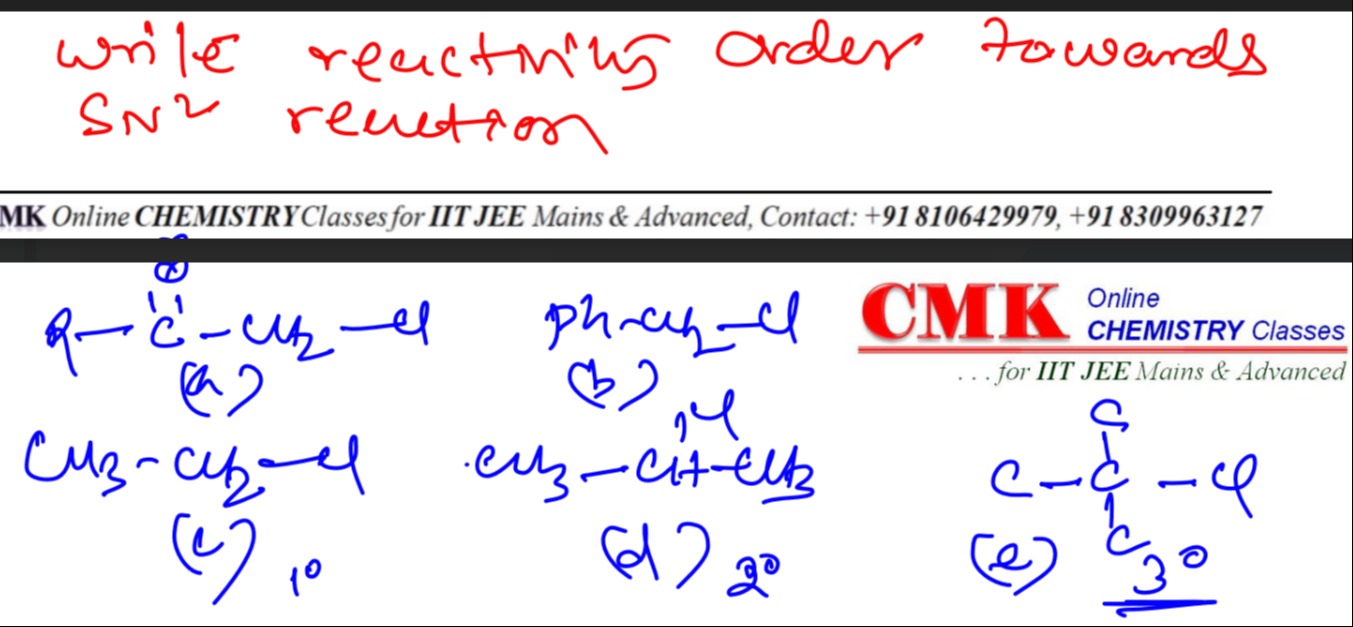Question
Question: write reactivity order towards $SN^2$ reaction...
write reactivity order towards SN2 reaction

Answer
(b) > (c) > (d) > (e) > (a)
Explanation
Solution
The reactivity of alkyl halides towards SN2 reactions is primarily determined by steric hindrance at the carbon atom bearing the leaving group and electronic factors. The general order of reactivity based on steric hindrance is: Methyl > Primary > Secondary > Tertiary. Benzylic and allylic halides are generally more reactive than simple primary halides due to resonance stabilization of the transition state. Electron-donating groups near the reaction center tend to decrease SN2 reactivity by increasing electron density at the electrophilic carbon and repelling the incoming nucleophile.
- (b) PhCH2−Cl (Benzyl chloride): Primary carbon with resonance stabilization of the transition state. Most reactive.
- (c) CH3−CH2−Cl (Ethyl chloride): Primary alkyl halide, low steric hindrance. Highly reactive.
- (d) CH3−CClH−CH3 (Isopropyl chloride): Secondary alkyl halide, moderate steric hindrance. Less reactive than primary.
- (e) (CH3)3C−Cl (tert-Butyl chloride): Tertiary alkyl halide, high steric hindrance. Least reactive among simple alkyl halides.
- (a) R−C⊖H−CH2−Cl: Primary alkyl halide with a carbanion on the alpha-carbon. The carbanion is a strong electron-donating group, increasing electron density at the carbon bonded to chlorine, making it less electrophilic and hindering nucleophilic attack. Least reactive.
Therefore, the reactivity order is: (b) > (c) > (d) > (e) > (a).
